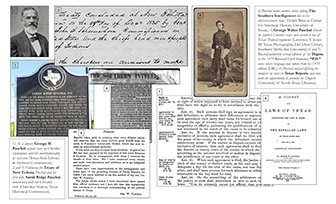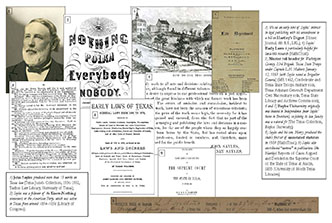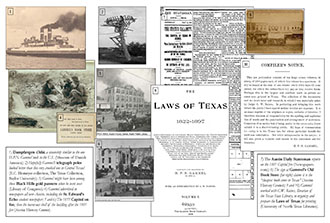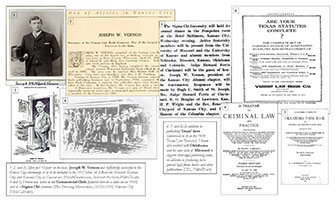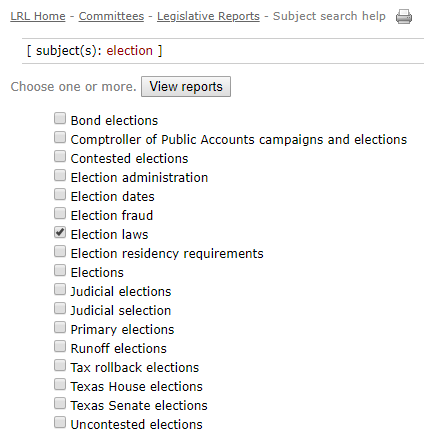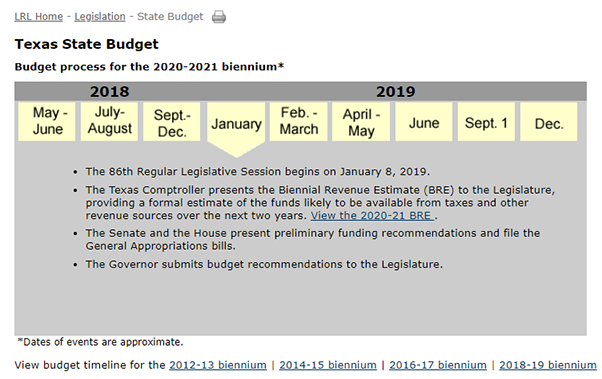

Check out the LRL's state budget timeline as you follow the budget process for the 2020–2021 biennium. The Senate and House's preliminary funding recommendations will be posted when both bills are filed, as will the governor's budget recommendations.
You can click through the timeline to see what is scheduled to happen in each date range. The LRL will add links to documents as they are released.
Past budget timelines are available in PDF form just below the timeline, as well as a variety of other budget resources. Be sure to check back for updates as budget planning progresses for the upcoming biennium.
On the first day of session next week, Tuesday, January 8, the House of Representatives will elect a new Speaker of the House, and the Senate will elect a new Senate President Pro Tem, per Texas Constitution, Article 3, Section 9. Access past Senate President Pro Tem information and Speaker election documents on our website to learn more about historic leaders within the Texas Senate and House.
The two chambers typically adopt their rules from the previous session for the first day, and then adopt updated rules in the following days. Visit our House & Senate Rules and Precedents page to see historic rules of the Texas Legislature.
A list of the members-elect for the 86th Legislature is available here.
On September 1, 2018, 10 bills or sections thereof that were passed by the 85th Legislature will take effect. SB 550, 84R also will take effect on September 1.
In addition, sections of SB 1329 and HB 2950, 85th Legislature, will take effect on October 1, 2018, and December 31, 2018, respectively.
To keep up with new laws throughout the year, check the Library's list of bill effective dates.
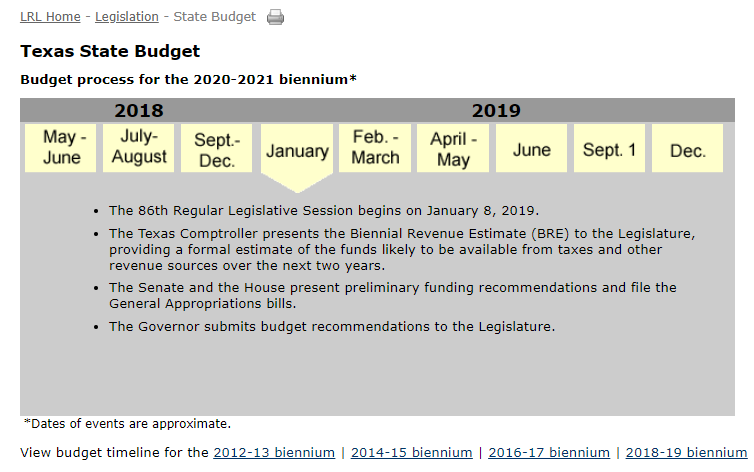
The LRL's state budget timeline has been updated to reflect the budget process for the 2020–2021 biennium. Currently, state agencies are in the process of developing strategic plans and Legislative Appropriation Requests (LARs). The LARs documents will be available in the Legislative Budget Board's database here.
You can click through the timeline to see what is scheduled to happen in each date range. The LRL will add links to budget bills and related documents as they are released.
Past budget timelines are available in PDF form just below the timeline, as well as a variety of other budget resources. Be sure to check back for updates as budget planning progresses for the upcoming biennium.
What are the key deadlines for the 86th Regular Session? Official deadlines will be set when the House and Senate adopt their rules, but until then, the Texas Legislative Council Drafting Manual provides a perpetual calendar (shown below) that can be useful. According to the Manual:
1st day of session: January 8, 2019
60-day bill filing deadline: March 8, 2019
Adjournment sine die: May 27, 2019
Post-session 20-day deadline for governor to sign or veto: June 16, 2019
Effective date (91st day after adjournment): August 26, 2019
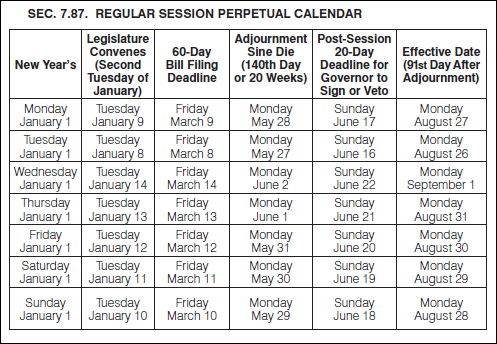
Table can be viewed in the Texas Legislative Council Drafting Manual.
Other upcoming dates of interest include:
July–August 2018: State agencies develop strategic plans and associated Legislative Appropriations Requests (LARs). These are submitted to the Legislative Budget Board (LBB) and the Governor's Office of Budget, Planning, and Policy (GOBPP). View LAR submissions.
September–December 2018: Legislative Budget Board and the GOBPP hold hearings on each state agency’s strategic plan and LAR and prepare separate budget recommendations to be presented to the 86th Legislature (Texas Government Code §§ 322.007, 401.043–401.0445). See more budget deadlines in our timeline.
November 6, 2018: General election for federal, state, and county officers (Section 1, Article XVII, Texas Constitution; Texas Election Code § 41.001).
November 12, 2018: Bill prefiling begins (House Rule 8, Sec. 7 and Senate Rule 7.04(a)).
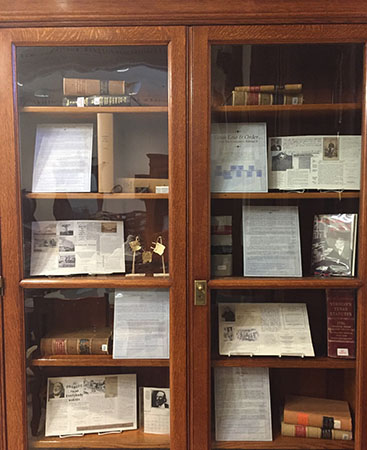 It's easy to take for granted the work of compiling the law. Once the session is over and the governor signs the bills, everything is done, right? Far from it. Preparing volumes that update the law requires time and careful consideration. In this display we took a look at some of the important resources for studying Texas legislative history and the people who laid the foundations for the structure of our laws.
It's easy to take for granted the work of compiling the law. Once the session is over and the governor signs the bills, everything is done, right? Far from it. Preparing volumes that update the law requires time and careful consideration. In this display we took a look at some of the important resources for studying Texas legislative history and the people who laid the foundations for the structure of our laws.Drawing from our "Who Is..." blog series, the exhibit profiles the lives and work of George W. Paschal, John Sayles, H.P.N. Gammel, and Joseph W. Vernon, all of whose contributions we see reflected in our contemporary Texas legislative publications. Learn who hung up the laws to dry after the Capitol fire, who represented the Cherokee Nation in several important cases, who helped establish the law department at Baylor University, and who never resided in Texas but has his name on our law publications today. (And if you can't make it in person, click on the collages below to learn more about Texas' law compilers.)
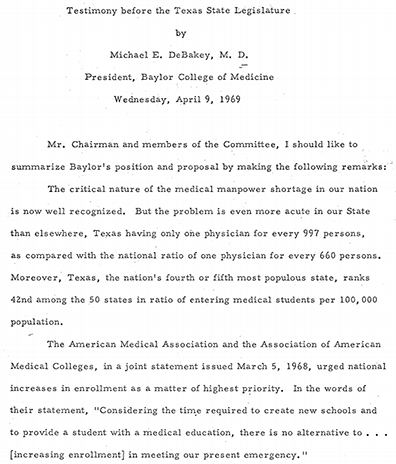
House and Senate committee minutes are a valuable resource for understanding the work that goes into crafting legislation. House standing committee minutes in the Legislative Reference Library collection from before 1973 have been scanned and are available in the LRL's committee minutes database.
Scanned minutes, particularly from earlier sessions, may also include other committee documentation, including agendas, exhibits, hearing notices, press releases, rules, testimony, transcripts, and vote sheets. For example:
- The 42nd Legislature's House Committee on State Affairs minutes from 1931, which are the earliest House minutes we have scanned. They are pasted in a composition book, complete with attendance record and subcommittee rosters.
- A 1971 brief of opposition submitted by the Kingsville Chamber of Commerce, to the House Committee on Higher Education and the Senate Committee on State Affairs, regarding a proposed University of South Texas.
- Testimony, transcripts, and exhibits presented regarding investigations on alleged improper lobbying for "right to work" legislation (1945), the state prison system (1943), the State Department of Public Welfare (1943), and much more.
- The House Committee on State Affairs' discussion of Daylight Savings Time, per HB 275, 60R.
The LRL database also allows users access to committee documents from House, Senate, and Joint committees, 63rd–77th Legislatures (1973–2001), as well as to search for minutes from the 78th–85th Legislatures that are available through Texas Legislature Online.
The digitization of the Senate standing committee minutes prior to 1973 is in process.
Image: On April 9, 1969, several leaders from the Baylor College of Medicine, including Dr. Michael E. DeBakey, testified before the House and Senate's respective State Affairs committees, offering possible solutions for the state's physician shortage.
In this occasional series, we explain terms used in the Texas legislative environment.
Texas legislators can introduce three types of resolutions*:
Concurrent Resolution—A type of legislative measure that requires adoption by both chambers of the legislature and generally requires action by the governor. A concurrent resolution is used to convey the sentiment of the legislature and may offer a commendation, a memorial, a statement of congratulations, a welcome, or a request for action by another governmental entity. Concurrent resolutions are also used to memorialize (petition) the U.S. Congress, express the views of the legislature, designate official state symbols, and adopt official date or place designations. Additionally, concurrent resolutions are used for administrative matters that require the approval of both chambers, such as providing for adjournment or a joint session, but these types of concurrent resolutions do not require action by the governor.
Joint Resolution—A type of legislative measure that requires adoption by both chambers of the legislature but does not require action by the governor. A joint resolution is used to propose amendments to the Texas Constitution, ratify amendments to the U.S. Constitution, or request a constitutional convention to propose amendments to the U.S. Constitution. Before becoming effective, the provisions of joint resolutions proposing amendments to the Texas Constitution must be approved by the voters of Texas.
Simple Resolution—The type of legislative measure that is considered only within the chamber in which it is filed. A simple resolution can offer a commendation, a memorial, a statement of congratulations, a welcome, or the views of that chamber. This type of measure is also used to name a mascot, memorialize (petition) the U.S. Congress, adopt or change rules of procedure, initiate a study by a single chamber, and request action by another governmental entity.
|
Resolutions in the 85th Legislature
|
Introduced
|
Signed/Filed/Enrolled
|
|
Concurrent Resolutions, 85R
|
202
|
97
|
|
Concurrent Resolutions, 85(1)
|
22
|
2
|
|
Joint Resolutions, 85R
|
169
|
9
|
|
Joint Resolutions, 85(1)
|
52
|
0
|
|
Simple Resolutions, 85R
|
3,670
|
3,643
|
|
Simple Resolutions, 85(1)
|
663
|
654
|
*Definitions taken from the Texas Legislative Glossary, published by the Texas Legislative Council for the 85th Legislature.
It's primary election day! Texas Election Code § 41.007 sets the general primary election date as "the first Tuesday in March in each even-numbered year," which makes Texas the first state to hold its primary this year, according to the National Conference of State Legislatures.
To learn more about topics the legislature has discussed pertaining to elections over the years, you can use our Legislative Reports page, enter "election" in the subject field, then click "search." Then, you can drill down to more specific topic(s) and click "view reports" to explore committee member lists, reports, minutes, and related documents.
Cover image by Flickr user Jon Wiley.
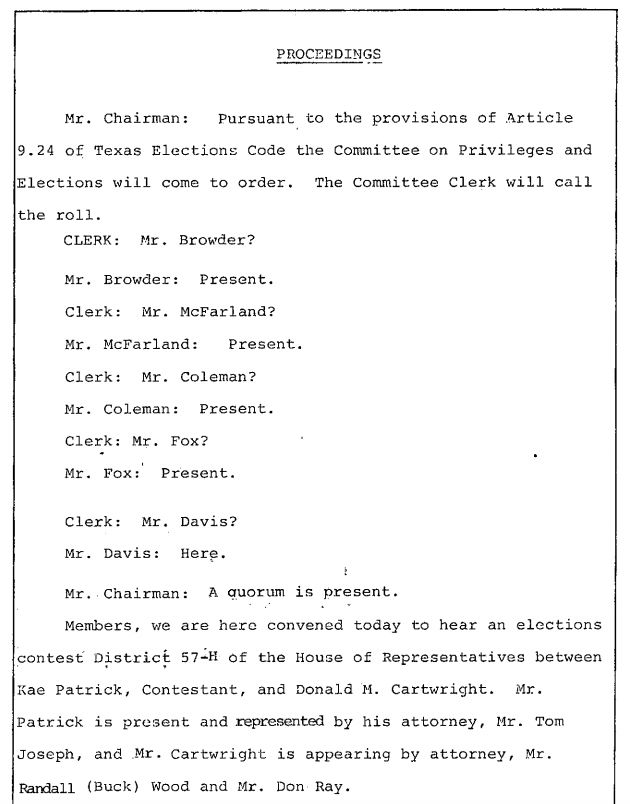
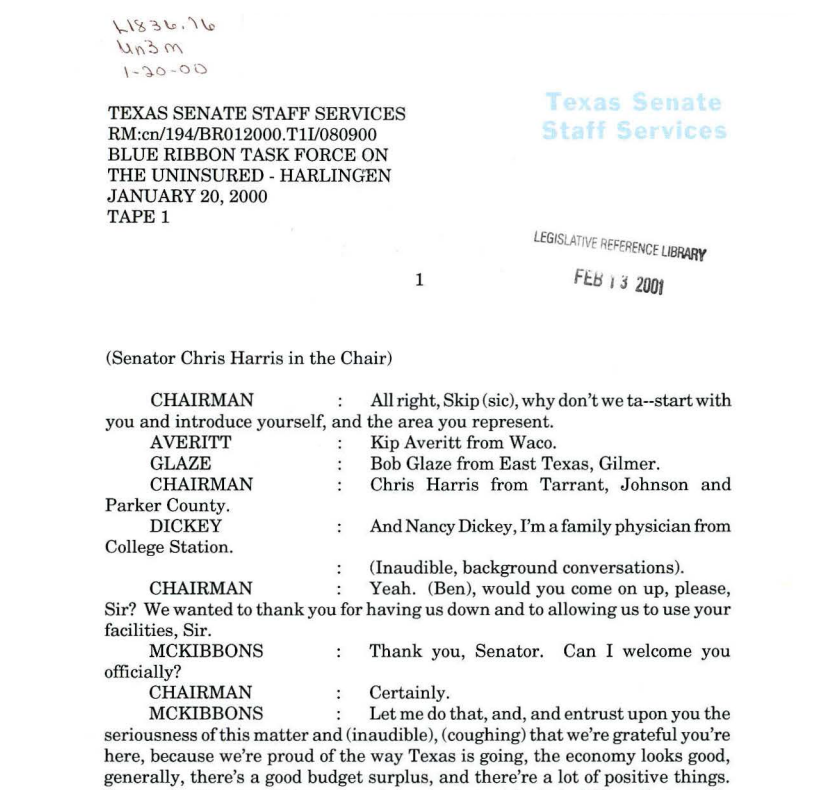
Committee minutes of the 77th Legislature (House, Senate, and Joint, 2001–2002) have been scanned and are available in the LRL's committee minutes database. Our database now contains scanned minutes for the 63rd–77th Legislatures (1973–2001).
In addition to the information typically included in minutes, a variety of interesting supplemental resources, reports, maps, and transcripts are available. (Some of these PDFs include bookmarks to enhance navigation.) For example:
- The October 28, 1977 minutes for the House Committee on Natural Resources’ Subcommittee on the Texas Water Plan, 65th Legislature, include maps documenting the state of water resources at the time and projections for the future. (Large file may take a while to load.)
- At the January 23, 1979 meeting of the Senate Committee on Natural Resources, 63rd Legislature, attendees seem to have heard a “Poem about Pollution,” which is included on the last page of the minutes document.
- The 70th Legislature’s Joint Special Task Force on Rural Health Care Delivery documentation includes Rural Health Care '89, an excellent summary of the legislative package in the 71st Legislature, including the Omnibus Health Care Rescue Act, Medicaid enhancement, creation of the Outstanding Rural Scholar Recognition Program for rural students to pursue education in a health-related field, and hospital districts. (The report is also linked in the Legislative Archive System for the bills discussed, such as HB 1345, 71st R.S.)
- The House Committee on Redistricting, 77th Legislature, produced and reviewed many special supporting documents and color redistricting maps.
- The majority of meetings do not have transcriptions, but for the Senate Interim Committee on Economic Development, 75th Legislature, you can click on the dates to access minutes, witness lists, and transcripts for all of its meetings.
The LRL database also allows users to search for committee documents from the 78th–85th Legislatures that are available through Texas Legislature Online.
The committee minutes database will continue to grow as we scan older minutes before 1973 in our collection.
Images, left to right:
The Joint Blue Ribbon Task Force on the Uninsured held meetings in various Texas cities, such as this one in Harlingen, as they examined the problem of Texans who lack health insurance.
If you’re interested in contested elections, you can use the committee search (http://www.lrl.texas.gov/committees/cmteSearch.cfm) to find election committee records. Election contests usually fall to a select/special committee, like the Special House Committee on Privileges and Elections, 66th R.S., that reviewed the contest between Kae Patrick and Donald Cartwright for the election of a representative from District 57H.

